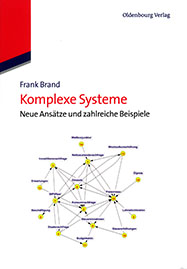|
|

Description
Over the last decades different branches of research came up to describe complex dynamic systems. Additionally to control such systems is an important issue. Areas where complex contexts can be found, are for instance: economy, banking sector and financial systems, sociology, medicine, management, quality control, traffic control. Concrete problems that are characterized by highly connected components are: Models of national economies, Cross ownership in temporal development, Complex courses of diseases in man and animal, so-called multifactorial diseases, Catastrophe management, City and regional planning, Security and risk analysis. All examples show a large number of components together with a high interconnectedness of these components. And every component can have subcomponents. Examples are organs in man and animals. Of course a metro plan with connected metro stations is another example of a complex system. The book describes the most important basics on undirected and directed graphs, the generation of closed feedback loops (so-called Hamiltonian cycles) and presents the importance of general paths in graphs. All important aspects are presented along examples. This topic is important for those dealing with complex structured and highly connected environments. Related Topics Applied Mathematics |
|
|
